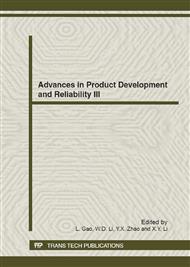p.115
p.121
p.130
p.139
p.145
p.151
p.159
p.164
p.170
Modeling of Fatigue Crack Closure by Finite Element Method
Abstract:
Crack closure concept is often used to explain the crack propagation behavior in cracked components. The effective stress intensity factor range is considered as a driving force of fatigue crack growth based on the traditional crack closure concept. The crack closure process and the plastic deformation near the crack tip were discussed in this paper. The standard compact tension specimen with the plane-stress condition was used to study the crack closure. A dynamic crack propagation method was proposed to simulate the effect of previous fatigue crack growth on the successive crack growth behavior. To obtain the accurately numerical results of stress and strain components, the Jiang and Sehitoglu cyclic plasticity model was implemented into ABAQUS as UMAT. With the detailed stress and strain response taken from the finite element (FE) simulation, the whole process of crack closure was described by the load curve. The load corresponding to maximum crack closure length is firstly proposed to describe the effect of fatigue damage. According to the results of FE simulation, the cyclic plasticity of the material near the crack tip persists during the crack closure period and should not be ignored.
Info:
Periodical:
Pages:
145-150
Citation:
Online since:
June 2012
Authors:
Keywords:
Price:
Сopyright:
© 2012 Trans Tech Publications Ltd. All Rights Reserved
Share:
Citation:


